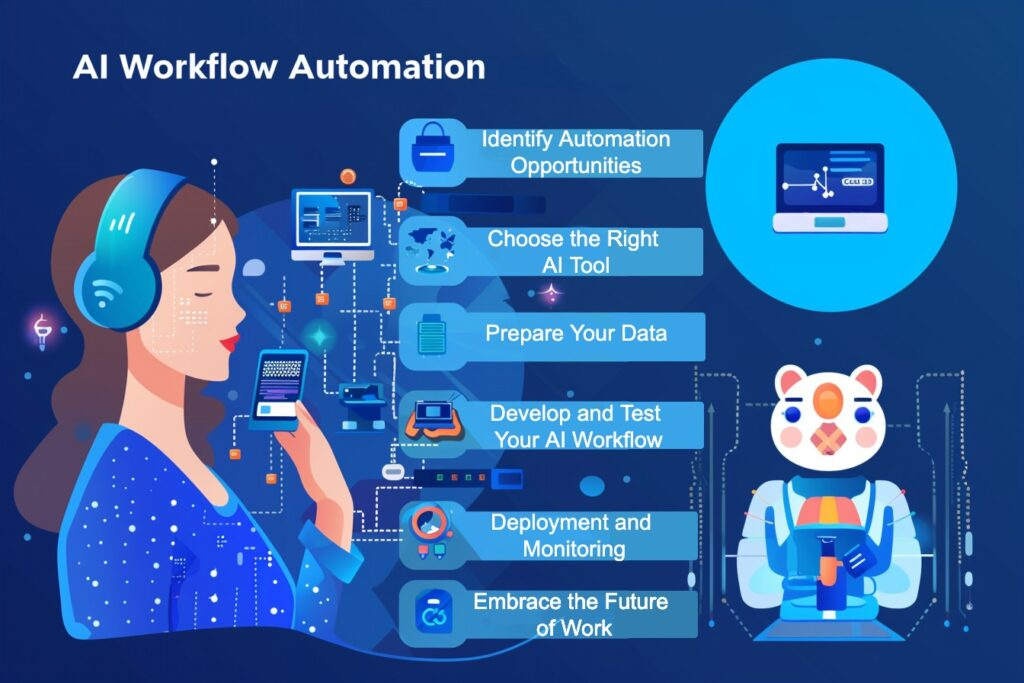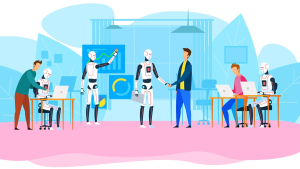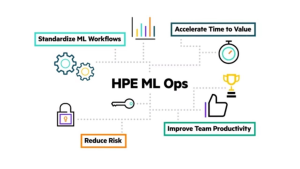Discover how AI-Assisted Content Automation is revolutionizing enterprise communication. Learn how AI-driven content generation, personalization, and orchestration enhance engagement, efficiency, and ROI across industries.

Introduction: The Strategic Importance of AI-Assisted Content Automation
AI-Assisted Content Automation is reshaping the enterprise content landscape. In a digital-first environment, content must be fast, personalized, and scalable. By embedding AI into content workflows, organizations transform messaging into a strategic, data-driven engine, driving engagement, efficiency, and brand authority.
-
Introduction: The Strategic Importance of AI-Assisted Content Automation
-
Architecture of AI-Driven Content Systems
-
Personalization at Scale: From Data to Narrative
-
Integrating AI with CMS, Marketing Automation, and Digital Ecosystems
-
Quality, Compliance, and Ethical Considerations
-
Operational Benefits and ROI
-
Industry Use Cases Across Sectors
-
Emerging Trends: Generative AI, Multimodal Content, and Predictive Engagement
-
Future Outlook: Autonomous, Intelligent Content Ecosystems
-
Conclusion: AI-Assisted Content as the Engine of the Intelligent Enterprise
In today’s digital-first enterprise landscape, content is no longer just marketing collateral — it is a strategic asset, a driver of engagement, and a catalyst for brand authority. Yet, creating, personalizing, and scaling content across channels has become increasingly complex. Enterprises face mounting pressure to deliver high-quality messaging in real time, across diverse audiences, and on multiple platforms.
Enter AI-Assisted Content Automation: the next evolution in intelligent content creation. By integrating artificial intelligence into content workflows, enterprises can generate, optimize, and distribute messaging at unprecedented speed and precision, transforming content from a tactical function into a strategic engine of business growth.
This article explores how modern enterprises leverage AI for content automation, blending strategic vision, technical sophistication, and business intelligence in a way that is both luxurious and authoritative — perfect for thought-leadership positioning.
1. The Strategic Imperative of AI-Assisted Content Automation
Enterprises are inundated with the demand for content — from product descriptions, blogs, and whitepapers to social media posts, newsletters, and personalized campaigns. Manual content creation cannot scale to meet modern expectations for speed, relevance, and personalization.
AI-assisted content automation enables enterprises to:
- Accelerate content generation without sacrificing quality
- Personalize messaging for specific audience segments
- Optimize content for SEO, engagement, and conversions
- Free marketing teams to focus on strategy, storytelling, and innovation
By embedding AI into content workflows, organizations transform communication into a data-driven, intelligence-enabled function, creating a competitive advantage that scales globally.
2. Architecture of AI-Driven Content Systems
Enterprise content automation relies on a multi-layered AI architecture:
- Content Generation Layer: AI models (GPT, T5, LLaMA, Claude, etc.) generate drafts, outlines, and multimodal content.
- Data Integration Layer: AI ingests audience insights, analytics, CRM data, and historical engagement metrics.
- Quality Assurance Layer: Natural language understanding, grammar, and style-checking engines ensure consistency and brand alignment.
- Personalization Engine: AI dynamically adapts content for specific personas, geographies, and channels.
- Automation & Distribution Layer: Integration with CMS, email marketing platforms, and social media APIs allows automated publishing and A/B testing.
- Monitoring & Feedback Layer: Continuous analytics feed back into AI models to improve content relevance, SEO ranking, and audience engagement.
This architecture ensures efficiency, creativity, and strategic alignment across the content lifecycle.
3. Personalization at Scale: From Data to Narrative
The true power of AI-assisted content lies in its ability to personalize at scale:
- Behavioral Insights: AI analyzes user engagement, browsing patterns, and purchase behavior to tailor content.
- Dynamic Messaging: Content dynamically adapts based on context, device, or platform.
- Predictive Recommendations: AI anticipates audience interests and generates content that resonates before demand emerges.
The result is a hyper-personalized content experience that enhances engagement, loyalty, and conversions while maintaining brand integrity.
4. Integrating AI with CMS, Marketing Automation, and Digital Ecosystems
AI-assisted content automation thrives when integrated into enterprise digital ecosystems:
- Content Management Systems (CMS): Automated drafts, tagging, and publishing streamline operations.
- Marketing Automation Platforms: AI-driven emails, campaigns, and multichannel content sequences improve efficiency.
- CRM & Analytics Integration: Audience data informs AI-generated content, creating closed-loop optimization.
- Omnichannel Delivery: AI ensures messaging consistency across websites, social media, email, and digital advertising.
Seamless integration transforms content from a siloed function into a strategically orchestrated enterprise capability.
5. Quality, Compliance, and Ethical Considerations

AI-generated content introduces unique governance requirements:
- Brand Consistency: Style guides, tone, and messaging rules are enforced by AI.
- Regulatory Compliance: GDPR, CCPA, and industry-specific regulations are embedded into workflows.
- Bias & Fairness: AI audits ensure inclusive language and representation.
- Human-in-the-Loop: Editors maintain oversight, blending human creativity with AI efficiency.
Ethical AI practices are not only responsible—they enhance credibility and brand trust.
6. Operational Benefits and ROI
Enterprises adopting AI-assisted content automation achieve measurable benefits:
- Reduced Production Time: AI drafts content in minutes rather than days.
- Cost Efficiency: Automating repetitive writing tasks frees teams to focus on high-value strategy.
- Scalable Personalization: Hundreds of content variations can be generated automatically.
- Improved Engagement: Predictive AI recommendations enhance relevance and conversion metrics.
- Data-Driven Optimization: Continuous feedback loops ensure content evolves with audience preferences.
The ROI is tangible, driving both operational efficiency and revenue growth.
7. Industry Use Cases Across Sectors
E-commerce: Automated product descriptions, SEO content, and personalized marketing campaigns.
Financial Services: AI-generated reports, market analyses, and customer communication.
Healthcare: Patient education materials, compliance-aligned documentation, and clinical communication.
Enterprise IT: Knowledge base content, technical documentation, and AI-assisted internal communications.
Media & Publishing: Automated articles, summaries, and multilingual content for global audiences.
These examples demonstrate how AI-assisted content automation enables enterprises to scale narrative intelligence while maintaining high quality.
8. Emerging Trends: Generative AI, Multimodal Content, and Predictive Engagement
- Generative AI Models: Advanced LLMs create more human-like, contextually rich content.
- Multimodal Content: Integration of text, images, video, and audio for immersive experiences.
- Predictive Engagement Analytics: AI anticipates content effectiveness and audience response.
- Voice & Conversational AI Integration: Dynamic content generation for chatbots and virtual assistants.
- Autonomous Content Loops: Continuous learning pipelines optimize messaging in real time.
These trends position AI-assisted content automation as the foundation for next-generation digital engagement.
9. Future Outlook: Autonomous, Intelligent Content Ecosystems

Looking ahead, enterprises will move toward fully autonomous content ecosystems:
- AI continuously generates, personalizes, tests, and optimizes content across platforms.
- Predictive analytics inform audience-first content strategies.
- Integration with digital twins and enterprise AI allows simulation-driven content planning.
- Human creativity remains at the core, but AI accelerates scale, insight, and precision.
In this landscape, content is not just communication—it is a strategic intelligence capability driving brand influence, customer experience, and revenue growth.
Conclusion
AI-assisted content automation is more than a technological innovation—it is a strategic enabler. By blending artificial intelligence with human creativity, enterprises unlock speed, scale, and personalization that were previously impossible.
High-performing enterprises use AI to orchestrate content as a central asset, ensuring messaging is timely, relevant, and ethically aligned. From marketing campaigns to operational knowledge sharing, AI-assisted content automation empowers leaders to make data-driven, insight-rich, and audience-centric decisions.
The future of enterprise content is intelligent, adaptive, and autonomous—where AI augments human creativity to craft experiences that engage, inspire, and drive measurable business impact.
AI-assisted content automation is not just a capability—it is the engine of the intelligent enterprise.


